Looking Past The Boxscore
Page 1 of 1
 Looking Past The Boxscore
Looking Past The Boxscore
http://www.hoopsworld.com/looking-past-the-box-score
Looking Past The NBA Box Score
By Nate Duncan
The Toronto Raptors’ Rudy Gay recently made headlines by banning stat sheets from the team’s locker room after games. While Gay’s edict seemed more like an effort to curb perceived selfishness, it is true that the statistics that show up in the traditional box score are not necessarily reflective of a player’s contributions to his team’s performance. This is the case even with more advanced metrics like PER, WARP or Win Shares, which parse the raw box score data in very intelligent ways to far better approximate a player’s value than the mere per game averages on which we used to rely. Nonetheless, there are many contributions that do not show up on the NBA’s official stat sheet at all. Moreover, the ways in which players reach their box score statistics are important for predicting their performance going forward. Fortunately for Gay, advanced statistics are starting to become available to measure even those nebulous contributions that “don’t show up on the stat sheet.” Oftentimes these metrics bolster, modify or even contradict the conclusions of box score-based conventional wisdom. Here are three players on whom advanced metrics shed particular light.
Derrick Williams
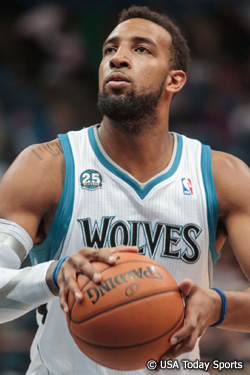
The just-traded Williams is projected to start at the three for the Sacramento Kings. Kings small forward has been one of the worst position groups in the league, with John Salmons performing poorly but playing most of the minutes due to a lack of other options. Taking a flier on Williams is a good move, since he does have the pedigree of the 2011 No. 2 overall pick and the Kings only had to give up a middling talent in Luc Mbah a Moute. However, it is pretty clear that Williams is not a three. His box score-based metrics are bad enough, as he is shooting only 35 percent overall. But a closer look at his shot location and SportVu numbers paint an even worse picture for his prospects on the wing. Williams is shooting 2-15 on threes, and 3-11 on midrangers. This is on the heels of 33.2 percent and 36.2 percent from those areas in 2012-13.
But most concerning for his ability to play the three are the number of drives recorded by the SportVu player tracking cameras.* In 162 minutes this year, Williams has driven precisely four times. And Williams is certainly no great shakes on the wing defensively either. If he cannot shoot, cannot drive and is not an above-average defender at the three, he simply is not a three.
*These are defined as “[a]ny touch that starts at least 20 feet from the hoop and is dribbled within 10 feet of the hoop and excludes fast breaks.” This is a pretty good metric for recording how well a player gets to the basket off the dribble, although it has a small weakness in that some drives that start as postups/isolations may start a little closer than 20 feet.
There may be some hope for Williams at the four, as one would think his shooting and driving would be facilitated by matching up against opposing fours who do not want to chase him around outside or are less able to keep up with him off the dribble. But even there he has not had much success historically, ranking below the 30th percentile in performance on isolations and postups in 2012-13 (when he played a lot of power forward in the absence of Kevin Love) to go along with the poor outside shooting.
The trade of Mbah a Moute for Williams was a good buy-low flier, and at least illustrates an understanding by Sacramento’s management of how far it has to go to compete in the West. But it is more likely that Williams will prove another body in the endlessly mediocre fight for power forward minutes in Sacramento than a solution at small forward.
Michael Beasley
Michael Beasley’s numbers so far have been excellent in limited minutes, compiling a 21.6 PER and .619 True Shooting Percentage. Some might assume these statistics are the result of playing off the HEAT’s stars, which is correct in a roundabout way. Beasley ranks only in the 49th percentile on spotups, so he is not simply waiting around for assisted open jumpers. Instead, he has been getting into the paint on his own, shooting 74.1 percent in the restricted area with only 50 percent of those buckets assisted. He ranks in the 79th percentile on postups and 98th percentile on isolations. He has shot 75 percent on his 15 drives,* which ranks third in the league among players with at least 10 drives. A look at the tape shows that he is able to bully his way to the basket and finish with his high skill-level.
*The comparison to his combo forward No. 2 pick brethren, Williams, is very unflattering to the Arizona alum, who compiled his four drives in quite a few more minutes than Beasley.
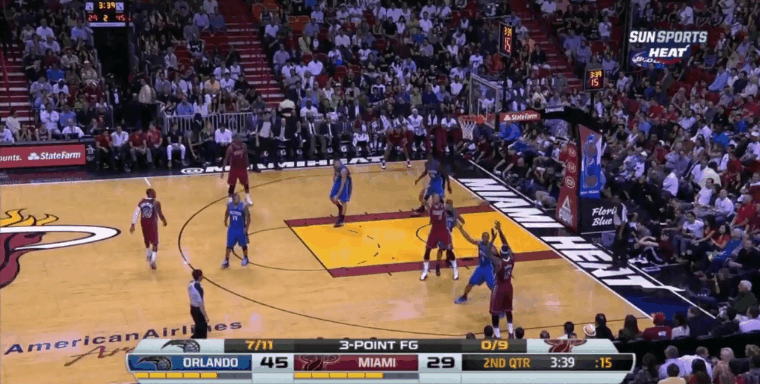
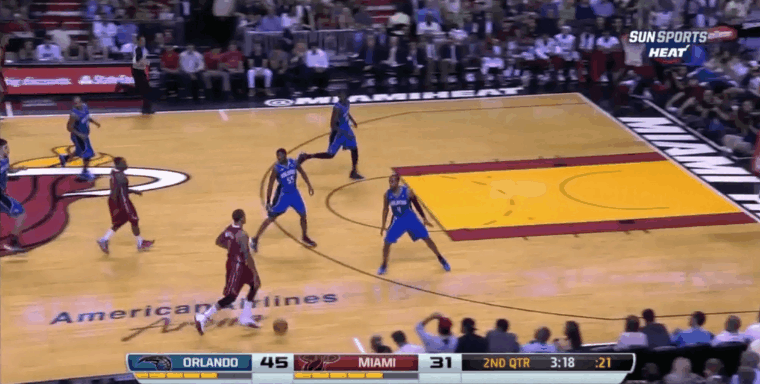
While these baskets are not assisted, they are facilitated by the stars and shooting the HEAT have around him. He has also been helped by playing power forward (his natural position) and matching up against second-unit fours.
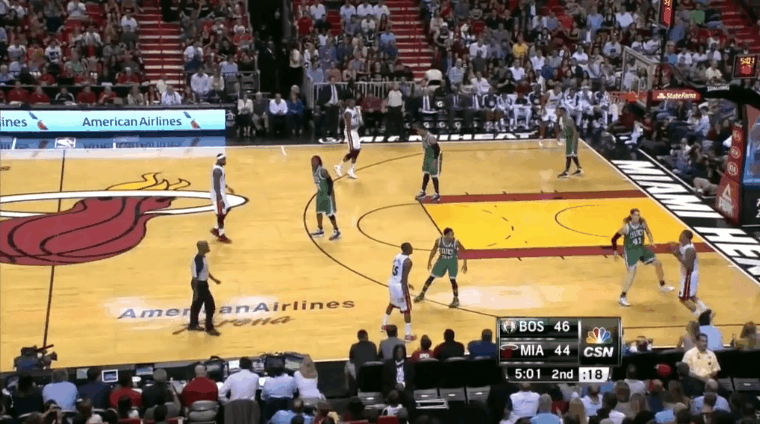
Beasley has been oft-criticized for his horrible shot selection in the past, but the environment in Miami and a renewed commitment to using his advantages instead of taking contested jumpers has done wonders for his efficiency.
Marc Gasol
This just in: The Grizzlies are really going to miss Marc Gasol. The Barcelona native’s* defensive contributions were well-recognized with his defensive player of the year award last year, but his offensive contributions are far more important than his 16 points per game would indicate.
*I recently posited that Team Chicago would be tough to beat in a city All-Star tournament. But what about Team Barcelona? Ricky Rubio, Juan Carlos Navarro, Pau Gasol and Marc all hail from there—that’s basically the Spanish national team.
Before his unfortunate MCL injury, Gasol led the league by a mile in elbow touches per game at 18, almost 50 percent more than the next highest player Blake Griffin. His elbow touches facilitate Zach Randolph’s close postups. Gasol cannot be sagged off due to his quick-release set shot, and he prevents the opponent from putting its center on Randolph. When Golden State switched Andrew Bogut onto Randolph down the stretch of Memphis’ overtime victory last week, Gasol immediately went to the low block and bludgeoned David Lee.
*I asked Gasol about the matchup post-game, and he confirmed that the Grizzlies strategy was to post him up instead of Randolph to take advantage of the switch.

This led the Warriors to double team, which Gasol deftly handled in assisting on a backbreaking Mike Conley three.
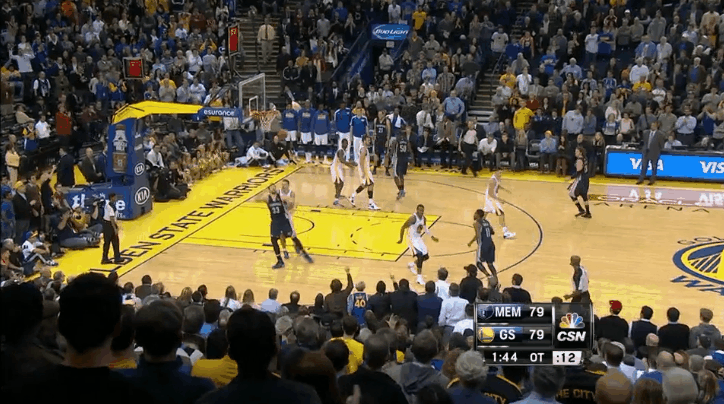
Gasol is essential on a team that really only has one player, Conley, who is capable of getting to the basket. If he is out too long, the Grizzlies may struggle to make the playoffs.
Assists Are Actually a Good Metric
Analysts have long complained that the assist is an imprecise and limited metric. After all, it is inherently a subjective statistic subject to the official scorer’s whims.* Moreover, what about assists that lead to free throws, the elusive hockey assist or assists on three-pointers? Surely, access to these metrics would give us far more information on who the best passers are.
*European and international scorekeepers tend to be quite miserly, while the New Orleans scorekeeper hands out assists like a partier dispensing beads on Bourbon Street.
Well, the SportVu cameras have given us reliable information on all of these questions, but those answers largely track with what simple assists were already telling us. Of particular note is how few free throw assists and secondary assists are actually recorded. Russell Westbrook leads the league with a mere 1.2 free throw assists per game, but every other player averages one or less. Even secondary assists are relatively rare compared to regular assists. John Wall leads the league at 2.5 per game, and he and Chris Paul (2.3) are the only players over two. It turns out that assists were already capturing the vast majority of passing value. Adding assists to free throw assists and secondary assists, a metric I will call True Assists* yields Paul and Wall still far atop the leaderboard, at 15.5 and 12.1 respectively. Because free throw and secondary assists occur so infrequently compared to assists, their potential to change our perception of the best passers is limited.
*Definitely open for suggestions on this one. I’ll credit Andrew Lynch for coming up with True Assists when I put the question out on Twitter.
Another interesting metric publicly available from SportVu is Potential Assists, defined as passes in which a player passes to a teammate who attempts a shot that, if made, would have counted as an assist. This is a bit more interesting. Among the 76 players averaging three or more assists per game, 51 percent of potential assists are converted into baskets. We will call this metric Assist Conversion Percentage (ACP). The range among these players is 41 percent (Jose Juan Barea) to 67 percent (Tim Duncan). There does not seem to be a ton of rhyme or reason between these results so far, except that (based on eyeballing the spreadsheet) the higher ACP’s tend to loosely correlate with players on better offensive teams. Still this is not entirely predictive, as illustrated by the Bulls’ Joakim Noah (58 percent), Derrick Rose (43 percent) and Kirk Hinrich (45 percent). Among the league’s top assist men, Stephen Curry is particularly noteworthy for his 62 percent ACP.
There are myriad variables that affect ACP, and an approximate 15-game sample size is insufficient to draw any conclusions from this new metric as yet—or even to determine whether having a high ACP necessarily shows a player is more or less valuable individually. After all, a high ACP could be indicative of myriad things: A player could have really efficient teammates, throw great passes to get them open, only throw passes to good shooters or avoid passing unless a teammate is wide open. With a larger sample size, perhaps more uses will emerge for this metric.
bob
.
Looking Past The NBA Box Score
By Nate Duncan
The Toronto Raptors’ Rudy Gay recently made headlines by banning stat sheets from the team’s locker room after games. While Gay’s edict seemed more like an effort to curb perceived selfishness, it is true that the statistics that show up in the traditional box score are not necessarily reflective of a player’s contributions to his team’s performance. This is the case even with more advanced metrics like PER, WARP or Win Shares, which parse the raw box score data in very intelligent ways to far better approximate a player’s value than the mere per game averages on which we used to rely. Nonetheless, there are many contributions that do not show up on the NBA’s official stat sheet at all. Moreover, the ways in which players reach their box score statistics are important for predicting their performance going forward. Fortunately for Gay, advanced statistics are starting to become available to measure even those nebulous contributions that “don’t show up on the stat sheet.” Oftentimes these metrics bolster, modify or even contradict the conclusions of box score-based conventional wisdom. Here are three players on whom advanced metrics shed particular light.
Derrick Williams

The just-traded Williams is projected to start at the three for the Sacramento Kings. Kings small forward has been one of the worst position groups in the league, with John Salmons performing poorly but playing most of the minutes due to a lack of other options. Taking a flier on Williams is a good move, since he does have the pedigree of the 2011 No. 2 overall pick and the Kings only had to give up a middling talent in Luc Mbah a Moute. However, it is pretty clear that Williams is not a three. His box score-based metrics are bad enough, as he is shooting only 35 percent overall. But a closer look at his shot location and SportVu numbers paint an even worse picture for his prospects on the wing. Williams is shooting 2-15 on threes, and 3-11 on midrangers. This is on the heels of 33.2 percent and 36.2 percent from those areas in 2012-13.
But most concerning for his ability to play the three are the number of drives recorded by the SportVu player tracking cameras.* In 162 minutes this year, Williams has driven precisely four times. And Williams is certainly no great shakes on the wing defensively either. If he cannot shoot, cannot drive and is not an above-average defender at the three, he simply is not a three.
*These are defined as “[a]ny touch that starts at least 20 feet from the hoop and is dribbled within 10 feet of the hoop and excludes fast breaks.” This is a pretty good metric for recording how well a player gets to the basket off the dribble, although it has a small weakness in that some drives that start as postups/isolations may start a little closer than 20 feet.
There may be some hope for Williams at the four, as one would think his shooting and driving would be facilitated by matching up against opposing fours who do not want to chase him around outside or are less able to keep up with him off the dribble. But even there he has not had much success historically, ranking below the 30th percentile in performance on isolations and postups in 2012-13 (when he played a lot of power forward in the absence of Kevin Love) to go along with the poor outside shooting.
The trade of Mbah a Moute for Williams was a good buy-low flier, and at least illustrates an understanding by Sacramento’s management of how far it has to go to compete in the West. But it is more likely that Williams will prove another body in the endlessly mediocre fight for power forward minutes in Sacramento than a solution at small forward.
Michael Beasley
Michael Beasley’s numbers so far have been excellent in limited minutes, compiling a 21.6 PER and .619 True Shooting Percentage. Some might assume these statistics are the result of playing off the HEAT’s stars, which is correct in a roundabout way. Beasley ranks only in the 49th percentile on spotups, so he is not simply waiting around for assisted open jumpers. Instead, he has been getting into the paint on his own, shooting 74.1 percent in the restricted area with only 50 percent of those buckets assisted. He ranks in the 79th percentile on postups and 98th percentile on isolations. He has shot 75 percent on his 15 drives,* which ranks third in the league among players with at least 10 drives. A look at the tape shows that he is able to bully his way to the basket and finish with his high skill-level.
*The comparison to his combo forward No. 2 pick brethren, Williams, is very unflattering to the Arizona alum, who compiled his four drives in quite a few more minutes than Beasley.


While these baskets are not assisted, they are facilitated by the stars and shooting the HEAT have around him. He has also been helped by playing power forward (his natural position) and matching up against second-unit fours.

Beasley has been oft-criticized for his horrible shot selection in the past, but the environment in Miami and a renewed commitment to using his advantages instead of taking contested jumpers has done wonders for his efficiency.
Marc Gasol
This just in: The Grizzlies are really going to miss Marc Gasol. The Barcelona native’s* defensive contributions were well-recognized with his defensive player of the year award last year, but his offensive contributions are far more important than his 16 points per game would indicate.
*I recently posited that Team Chicago would be tough to beat in a city All-Star tournament. But what about Team Barcelona? Ricky Rubio, Juan Carlos Navarro, Pau Gasol and Marc all hail from there—that’s basically the Spanish national team.
Before his unfortunate MCL injury, Gasol led the league by a mile in elbow touches per game at 18, almost 50 percent more than the next highest player Blake Griffin. His elbow touches facilitate Zach Randolph’s close postups. Gasol cannot be sagged off due to his quick-release set shot, and he prevents the opponent from putting its center on Randolph. When Golden State switched Andrew Bogut onto Randolph down the stretch of Memphis’ overtime victory last week, Gasol immediately went to the low block and bludgeoned David Lee.
*I asked Gasol about the matchup post-game, and he confirmed that the Grizzlies strategy was to post him up instead of Randolph to take advantage of the switch.

This led the Warriors to double team, which Gasol deftly handled in assisting on a backbreaking Mike Conley three.

Gasol is essential on a team that really only has one player, Conley, who is capable of getting to the basket. If he is out too long, the Grizzlies may struggle to make the playoffs.
Assists Are Actually a Good Metric
Analysts have long complained that the assist is an imprecise and limited metric. After all, it is inherently a subjective statistic subject to the official scorer’s whims.* Moreover, what about assists that lead to free throws, the elusive hockey assist or assists on three-pointers? Surely, access to these metrics would give us far more information on who the best passers are.
*European and international scorekeepers tend to be quite miserly, while the New Orleans scorekeeper hands out assists like a partier dispensing beads on Bourbon Street.
Well, the SportVu cameras have given us reliable information on all of these questions, but those answers largely track with what simple assists were already telling us. Of particular note is how few free throw assists and secondary assists are actually recorded. Russell Westbrook leads the league with a mere 1.2 free throw assists per game, but every other player averages one or less. Even secondary assists are relatively rare compared to regular assists. John Wall leads the league at 2.5 per game, and he and Chris Paul (2.3) are the only players over two. It turns out that assists were already capturing the vast majority of passing value. Adding assists to free throw assists and secondary assists, a metric I will call True Assists* yields Paul and Wall still far atop the leaderboard, at 15.5 and 12.1 respectively. Because free throw and secondary assists occur so infrequently compared to assists, their potential to change our perception of the best passers is limited.
*Definitely open for suggestions on this one. I’ll credit Andrew Lynch for coming up with True Assists when I put the question out on Twitter.
Another interesting metric publicly available from SportVu is Potential Assists, defined as passes in which a player passes to a teammate who attempts a shot that, if made, would have counted as an assist. This is a bit more interesting. Among the 76 players averaging three or more assists per game, 51 percent of potential assists are converted into baskets. We will call this metric Assist Conversion Percentage (ACP). The range among these players is 41 percent (Jose Juan Barea) to 67 percent (Tim Duncan). There does not seem to be a ton of rhyme or reason between these results so far, except that (based on eyeballing the spreadsheet) the higher ACP’s tend to loosely correlate with players on better offensive teams. Still this is not entirely predictive, as illustrated by the Bulls’ Joakim Noah (58 percent), Derrick Rose (43 percent) and Kirk Hinrich (45 percent). Among the league’s top assist men, Stephen Curry is particularly noteworthy for his 62 percent ACP.
There are myriad variables that affect ACP, and an approximate 15-game sample size is insufficient to draw any conclusions from this new metric as yet—or even to determine whether having a high ACP necessarily shows a player is more or less valuable individually. After all, a high ACP could be indicative of myriad things: A player could have really efficient teammates, throw great passes to get them open, only throw passes to good shooters or avoid passing unless a teammate is wide open. With a larger sample size, perhaps more uses will emerge for this metric.
bob
.

bobheckler- Posts : 61561
Join date : 2009-10-28
 Similar topics
Similar topics» Boxscore of Celts' last Game 7 road win
» Another Blast from the Past
» blast from the past
» Little Quiz..Blast From The Past
» Celtics get past Hump Day
» Another Blast from the Past
» blast from the past
» Little Quiz..Blast From The Past
» Celtics get past Hump Day
Page 1 of 1
Permissions in this forum:
You cannot reply to topics in this forum|
|
|
